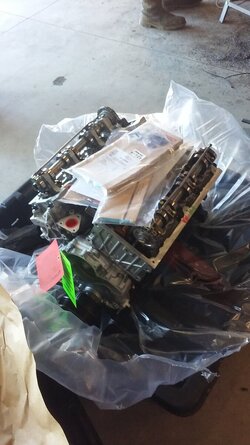- Joined
- December 22, 2021
- Messages
- 6,096
- Reaction score
- 4,614
- City, State
- Los Angeles, CA
- Year, Model & Trim Level
- 1998 XLT 4x4
personally, depending on age etc, if youre going thru the work of pulling the engine, replacing the timing components is good, but you may as well get a remanned unit, as it should last for many more years... personally, ive been quoted about 4k to do front and resr timing guides, but installing a remanned one afaik was around 6-7k, but I get alot of new parts in this deal, so if I werent thinking about going v8, i wouldve gone down this route... hope this helps!Hi All,
So I installed the two external tensioners this weekend. Cold start up rattle is significantly improved, although it can still be heard for a split second. The rattle at 2100 to 2300 RPM is quieter but is still present. And it did take about 15 miles of driving to quiet down. Just a couple of observations to add to the "knowledge base" in this thread. The old tensioners had no crush washers from the factory. I am not saying they should have, it just surprised me.
Also after I started using the WOT starts the car threw a fuel rail sensor code. With the new tensioners and no WOT starts the code has gone away. I do not know for sure they were related but the code only came up after the WOT starts and went away after several driving cycles with no WOT.
In this or a related thread someone pointed out the car might go 10 miles or it might go 50 thousand before the internal chain and guides totally fail. At this point other than the engine the Explorer is in very good condition (and I really like it) so I will start saving up for the expense of having the engine pulled and the internals replaced. Which bring me to wanting the opinion of the group. Should I look at the expense of having a remanufactured engine installed? My initial plan before this issue was to turn the Explorer into a second car in about two years and that is what I would still like to do. With the cost of used cars right now I think my best bet is to have the Explorer repaired but I want to make sure I know my options and what each will cost.













